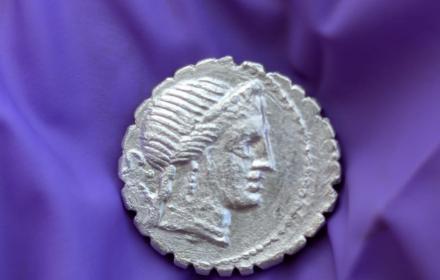Treasure trove of Roman silver coins buried during pirate attack unearthed on remote island
Pantelleria island was likely a trade and cultural hub in the Mediterranean during the Roman Republic
Your support helps us to tell the story
From reproductive rights to climate change to Big Tech, The Independent is on the ground when the story is developing. Whether it's investigating the financials of Elon Musk's pro-Trump PAC or producing our latest documentary, 'The A Word', which shines a light on the American women fighting for reproductive rights, we know how important it is to parse out the facts from the messaging.
At such a critical moment in US history, we need reporters on the ground. Your donation allows us to keep sending journalists to speak to both sides of the story.
The Independent is trusted by Americans across the entire political spectrum. And unlike many other quality news outlets, we choose not to lock Americans out of our reporting and analysis with paywalls. We believe quality journalism should be available to everyone, paid for by those who can afford it.
Your support makes all the difference.Archaeologists have unearthed a hoard of Roman coins on the Italian island of Pantelleria in the Mediterranean Sea, shedding more light on the region’s ancient history.
The 27 silver coins, dating from between 94 and 74BC, were found during restoration work at the historical site of the Acropolis of Santa Teresa and San Marco.
While assessing damage at the site, researchers from Germany’s University of Tübingen noticed small coins gleaming in loosened soil.
They dug the ground and found more. The coins were found to carry the design of a winged figure riding a chariot drawn by three horses. These were symbols engraved on the denarii, the main silver currency minted during the late Roman Republic nearly 2,000 years ago.

A trove of over 100 Roman silver coins had previously been found at the same site in 2010. The earlier dig had also unearthed three famous imperial heads of Caesar, Agrippina and Titus.
Taken together, the finds indicate that the Pantelleria island was a trade and cultural hub in the Mediterranean.
“This discovery offers valuable information for reconstruction of the events, trade contacts, and political relations that marked the Mediterranean in the Republican age,” Francesco Paolo Scarpinato, the island’s councilor for cultural heritage, said.
Thomas Schäfer, leader of the excavation, said archeologists had been “dining for 25 years in San Marco”. “It’s a wonderful site, fortunately intact, it has never been touched in centuries.”
Researchers suspect the coins were buried during a pirate attack, which coastal Roman villages routinely faced in the first century BC.
“There were frequent raids against the villages along the coast and it is easy to imagine someone hid their ‘nest egg’ when the ships arrived, without being able to retrieve it anymore,” researchers said.
Dr Schäfer noted the treasure could have ended up where it was found “after being hidden intentionally during an invasion”.

Join our commenting forum
Join thought-provoking conversations, follow other Independent readers and see their replies
Comments